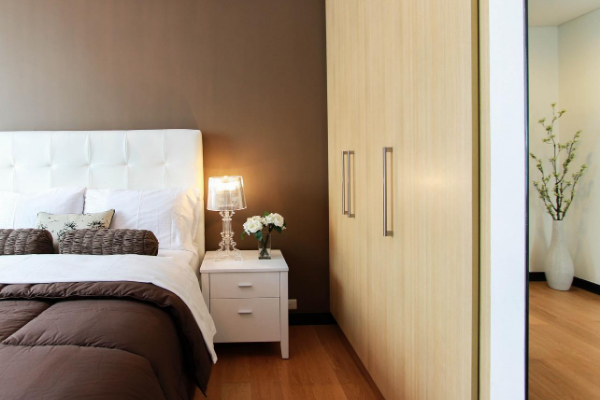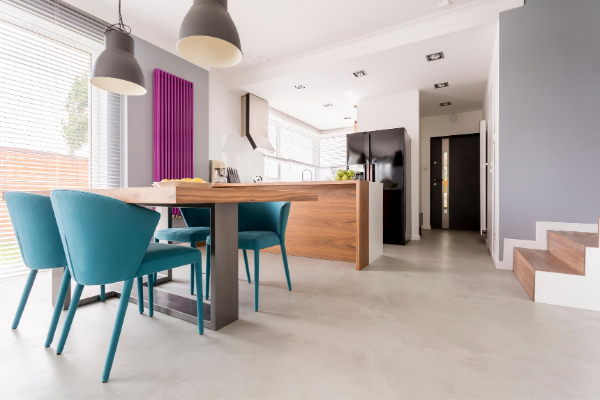Whether you’re a committed minimalist or gravitate more toward opulence, color can be a game-changer when it comes to making your house a home. But just as furniture and finishes are subject to trends, so are color schemes. The wrong color choice can date your home immediately or turn your formerly light-filled living room into a virtual black hole.
Fortunately, arming yourself with some key tips and basic knowledge about color schemes goes a long way in helping you settle on the right colors for your new home.
Keep reading!
Common Color Schemes

Monochromatic
Monochromatic color schemes are pleasing to the eye because all the colors are shades of the same color. A brown monochromatic color scheme, for example, can include different shades and tones of brown, from a warm tan to a deep chocolate.

Analogous
Analogous color schemes sometimes look a lot like monochromatic schemes, but the main difference is that analogous schemes include colors that are next to each other on the color wheel.
So while an analogous color scheme might include varying shades of green, for example, that same scheme will likely also include a shade of blue. Another common analogous color scheme is a range of shades from purple to pink.

Complementary
Complementary color schemes—where the colors in the scheme are opposite each other on the color wheel—can be visually pleasing, but they’re typically harder to pull off in paint alone. Instead, consider using one color—a warm beige, for example—on your living room walls, and use the complementary colors, such as a bright blue and a rich orange, as the colors of your throw pillows and accent pieces.

3 Tips for Using Color Schemes at Home
1. When in doubt, use the 60-30-10 rule.
Using bright colors can be intimidating, especially if you aren’t accustomed to making bold decorating choices. This is where the 60-30-10 rule comes in handy.
Here’s a basic explanation of how it works:
- Select a neutral paint color for the walls of your home. This is your 60 percent.
- Next, choose a bolder color in either an analogous or complementary position to your neutral and use that color in textiles, such as upholstery or window treatments.
- Finally, look for accent pieces and small accessory items in the third, boldest color in your scheme.
The 60-30-10 rule is easy enough that you don’t need any decorating experience to pull it off. And the best part is that the bold colors you choose are used for items that don’t require a massive repainting job!
2. Start from the floor and work up.
If you’ve opted for an elegant monochrome color palette for your new home, keep each room in balance by using darker shades toward the floor and gradually going lighter vertically. In other words, opt for a charcoal rug in your bedroom, for instance, and finish off your new owner’s suite with a pale, silvery gray ceiling light fixture.
3. Don't ignore your personal style.
Your new house is yours and not anyone else’s, so don’t let yourself be swayed too heavily by trends or suggestions that just don’t resonate with you. If you love deep navy blue and think it would look lovely on the walls of your downstairs powder room, go for it! Animal prints are your thing? Who cares if a home decor magazine warns against them!
Remember that paint colors can be changed. Furniture can be reupholstered. Accent pieces and window treatments can be replaced. Is repainting your house a pain? In most cases, yes. Is there a not-insignificant cost associated with reupholstering furniture? Of course! But the point is that you’re allowed to love something now and then change your mind later. And above all, go with your gut.
Making Your House a Home
Decorating is the fun part of turning your new house into your custom forever home, and the use of color plays a big role in that process. Use our tips above to help you settle on the right color scheme for your house, and enjoy feathering your nest!